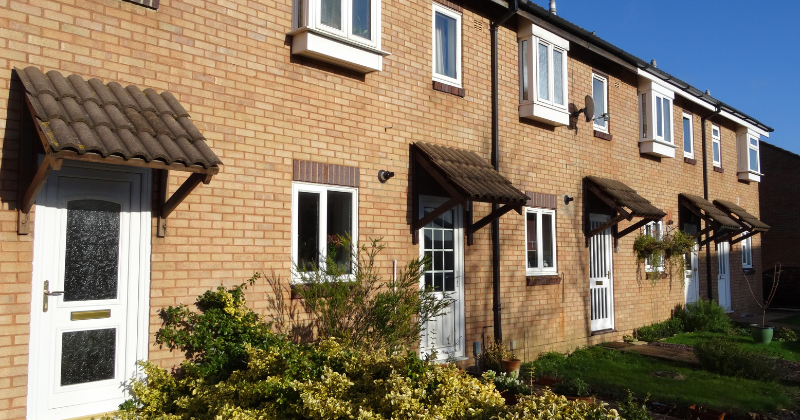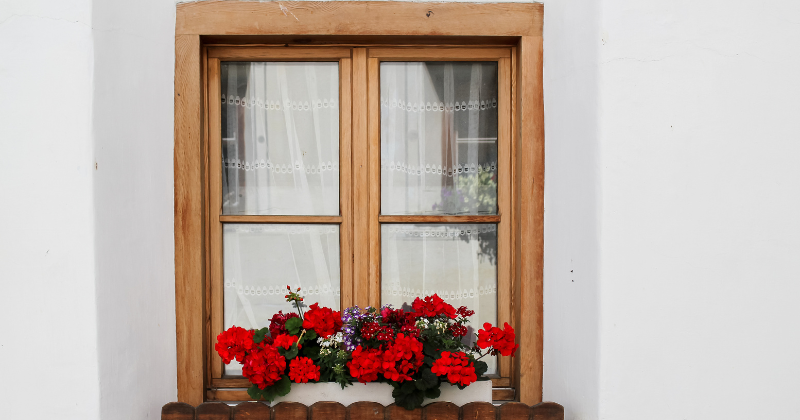Are you torn between timber framed windows or UPVC windows for your home? Do you ask yourself, “What are UPVC windows?” or “What benefits do wooden window frames offer?” Let’s delve into the advantages of both.
Timber windows, often called wooden replacement windows, bring a classic charm and warmth to any home. They’re known for their durability and timeless appeal. While UPVC windows, sometimes known for their wooded effect, offer modern homeowners a low-maintenance and cost-effective solution.
This article is perfect for homeowners, architects, and anyone keen on understanding the differences between timber vs UPVC windows.
By the end, you’ll have a clear picture of which window type suits your needs best. So, let’s continue to learn more about these two popular window materials.
Understanding UPVC: What Does UPVC Stand For?
UPVC stands for Unplasticised Polyvinyl Chloride. It’s a type of plastic known for its durability and resistance to weathering. Unlike other plastics, UPVC doesn’t contain any plasticisers, making it harder and non-flexible.
This makes it an ideal material for windows and doors. Its properties, weather-resistant and low maintenance, have made it a popular choice for homeowners.
What uPVC Window Styles Can You Get?
uPVC windows come in a range of styles, each designed to meet specific architectural and aesthetic needs. Here’s a breakdown of some popular uPVC window styles:
- uPVC Casement Windows: Hinged windows that open outwards, providing good ventilation and a modern look.
- uPVC Sliding Sash Windows: These slide vertically, offering a blend of traditional and modern UPVC benefits.
- uPVC Tilt & Turn: Flexible windows that can tilt inwards for ventilation or open fully.
- uPVC Bay Windows: These extend from the home, allowing more light and space.
- uPVC Bespoke Windows: Custom windows tailored to specific needs, ensuring a perfect fit and design.
What are the Uses of uPVC Window?
They offer a range of benefits, from durability to energy efficiency. But beyond these advantages, uPVC windows are versatile and can be used in various settings and styles. Here are five common uses of uPVC windows:
- Standard Home Windows: These windows provide insulation and security for everyday living.
- Conservatories: uPVC is often chosen for conservatories due to its resistance to weathering and ability to maintain a consistent temperature.
- Office Buildings: For modern office spaces, uPVC windows offer a sleek look while ensuring energy efficiency.
- High-Rise Apartments: Due to their durability and low maintenance, uPVC windows are often used in apartment complexes.
- Schools and Institutions: Schools often opt for uPVC windows because of their safety features and long lifespan.
What Is Timber?
Timber is essentially wood that’s been processed for use. It’s a natural material that’s been a part of human civilisation for ages. From building homes to crafting furniture, timber’s versatility is unmatched.
Especially in window framing, timber framed windows offer a blend of aesthetics and functionality. They bring a touch of nature indoors, providing warmth and charm that’s hard to replicate.
If you’re interested in exploring the range of timber windows, check out our timber casement windows and sliding sash windows.
Different Types of Timber Used in Windows
Timber, a natural resource, comes in various types, each with unique properties. Regarding window styles, certain types of timber are preferred due to their durability and appearance.
- Oak: Known for its strength and durability. It’s a popular choice for window frames.
- Pine: Lighter in weight and colour, it’s often used for indoor frames.
- Mahogany: Rich in colour and highly durable, it’s a premium choice for windows.
- Teak: Resistant to moisture and termites, making it ideal for windows.
- Cedar: Lightweight and resistant to decay, it’s often used for its aromatic properties.
What are the Uses of Timber?
Because of its versatility, Timber wood is used in many applications. Here are some common applications:
- Furniture Making: Tables, chairs, and cabinets.
- Flooring: Timber floors add warmth and elegance to any space.
- Roofing: Timber trusses are commonly used in roofing for their strength.
- Decking: Outdoor spaces often feature timber for its natural look.
- Fencing: Timber fences are both functional and aesthetically pleasing.
Timber vs uPVC Windows — What’s the Difference in Looks?
Regarding the aesthetic appeal of windows, both timber and uPVC have their unique charm. Timber windows exude a classic and timeless beauty reminiscent of old-world charm.
Their natural grain patterns and warm tones can add character to any home. On the other hand, uPVC windows offer a sleek and modern appearance. They come in various colours and can easily fit into contemporary home designs.
| Feature | Timber Windows | uPVC Windows |
| Appearance | Classic, Natural | Modern, Sleek |
| Texture | Natural Wood Grain | Smooth |
| Customisation | Can be stained or painted | Available in various colours |
| Suitability | Traditional homes, heritage sites | Modern homes, commercial spaces |
Disclaimer: The above table provides a general comparison and the actual appearance can vary based on specific designs and finishes chosen.
Timber vs uPVC Windows: Aesthetic Differences
The visual distinction between timber and uPVC windows is evident in their finishes and colour options. While timber can be stained to enhance its natural beauty, uPVC windows offer a variety of colour choices.
| Feature | Timber Windows | uPVC Windows |
| Finishes | Stains, Paints | Colour options, including wooded effect uPVC windows |
| Visual Appeal | Warm, Natural | Clean, Contemporary |
Comparing Material Properties: Timber vs uPVC Windows
When choosing windows, understanding the material properties is crucial. Timber windows are revered for their natural strength and durability.
Being a natural material, timber has inherent properties that make it resistant to certain elements. In contrast, uPVC windows are made from a type of plastic which offers its own set of advantages, including resistance to rot and corrosion.
| Feature | Timber Windows | uPVC Windows |
| Durability | High (natural resistance to elements) | High (resistant to rot and corrosion) |
| Strength | Strong (natural wood strength) | Moderate (reinforced with steel or aluminium) |
| Physical Properties | Natural grain and texture | Smooth, consistent finish |
Energy Efficiency Showdown: Timber vs uPVC Windows
Energy efficiency is a top concern for homeowners. Timber framed windows have natural insulating properties, helping to maintain indoor temperatures. uPVC windows, on the other hand, are designed with multi-chambered profiles that trap air, acting as a barrier to heat transfer.
| Feature | Timber Windows | uPVC Windows |
| Insulation | Natural insulator | Multi-chambered design for insulation |
| Energy Savings | Can help reduce energy bills | Effective in maintaining indoor temperatures |
Lifespan Analysis: Timber vs uPVC Windows
The longevity of a window type is a significant factor in decision-making. While timber windows, with proper care, can last for decades, uPVC windows also offer a long lifespan with minimal maintenance.
| Feature | Timber Windows | uPVC Windows |
| Longevity | Can last decades with proper care | Typically lasts 20-30 years with minimal maintenance |
Ensuring Safety: Security Considerations for Timber and uPVC Windows
Safety and security are paramount when selecting windows. Timber window frames provide a sturdy barrier and, when paired with the right type of glass, can offer enhanced security. uPVC windows are often reinforced with steel or aluminium, providing added strength against forced entry.
| Feature | Timber Windows | uPVC Windows |
| Security Features | Sturdy frame can be paired with security glass | Reinforced with steel or aluminium for added strength |
Sustainability Spotlight: Timber and uPVC Windows
Timber windows, being a natural resource, are often viewed as environmentally friendly, especially when sourced from responsibly managed forests. Their biodegradability stands as a testament to their eco-friendliness, ensuring that they leave a minimal footprint on our planet.
On the flip side, uPVC windows are made from plastic, which raises questions about their environmental impact. However, their long lifespan and recyclability make them a contender in the sustainability debate.
| Feature | Timber Windows | uPVC Windows |
| Source | Natural resource, renewable if responsibly sourced | Synthetic, derived from plastic |
| Lifespan | Can last decades with proper care | Typically lasts 20-30 years |
| Recyclability | Biodegradable, leaving a minimal environmental footprint | Can be recycled multiple times |
| Carbon Footprint | Absorbs CO2 during growth, eco-friendly | Manufacturing can have higher emissions, but long lifespan can offset |
Maintenance Guide: Timber vs uPVC Windows
When it comes to window upkeep, the materials you choose can dictate the effort and frequency of maintenance. Timber windows, with their elegant and premium nature, require periodic care. This maintenance not only ensures they remain functional but also enhances their lifespan and beauty, making every effort worthwhile.
Caring for Timber Windows
Timber windows radiate a natural elegance that homeowners cherish. However, to maintain their pristine condition and ensure longevity, a consistent care routine is essential. Here’s how you can keep them in their best shape:
- Regular Cleaning: Keep them looking fresh by dusting and wiping them with a damp cloth.
- Protection: Every few years, it’s wise to apply a protective sealant or paint. This step helps them resist the elements and keeps their look vibrant.
- Check for Damages: Especially after storms or severe weather, it’s good to check for signs of rot or other damage.
Cleaning and Maintaining uPVC Windows
uPVC windows, with their modern appeal, are designed for convenience. While they’re relatively low-maintenance, some care can go a long way in preserving their appearance and functionality. Here’s what you need to know:
- Routine Cleaning: A simple wipe with soapy water and a soft cloth keeps them clean.
- Avoid Abrasives: To keep their finish smooth, always use non-abrasive cleaners.
- Hardware Check: It’s a good habit to check that locks and hinges are functioning well regularly.
Cost Analysis: Affordability of Timber vs. uPVC Windows
Choosing the right windows for your home is not just about aesthetics; it’s also about investment. While both timber and uPVC windows have their respective price points, it’s crucial to consider the long-term value and charm that each brings. Timber, with its timeless appeal, often stands out as a worthy investment.
| Feature | Timber Windows | uPVC Windows |
| Initial Investment | While slightly higher, it reflects the quality and craftsmanship of natural material. | Often lower but may lack the bespoke charm of timber. |
| Long-Term Value | Adds significant value to properties; longevity ensures a one-time quality investment. | It is more affordable initially but may require replacements sooner, adding to long-term costs. |
| Maintenance Costs | Periodic, but enhance the window’s lifespan and beauty | Low, but without the periodic touch-ups that keep timber windows looking pristine. |
Disclaimer: The above costings are general estimates. Prices can vary based on suppliers and specific requirements. It’s always wise to get multiple quotes and consider the lasting value of your investment, especially in the UK.
Considering Alternatives: Aluminium-Frame Windows
Some homeowners pick aluminium-frame windows for their clean design and ongoing strength. These windows give homes a fresh, updated look. But, while aluminium has a modern feel, it can’t match the charm and cosy feel of timber window frames. For those who love a mix of old and new, timber is still the top choice.
Timber vs uPVC Windows: Concluding Thoughts
When deciding between timber and uPVC windows, it often comes down to individual preferences and home needs.
Timber windows offer timeless elegance and durability, seamlessly blending tradition with modern efficiency. While uPVC windows have advantages like cost-effectiveness and easy upkeep, they don’t quite match the authentic charm and premium feel of timber.
Discover the blend of tradition and innovation at Patchett Joinery, with over 170 years of crafting premium timber windows and doors. Making the correct choice means aligning with your home’s essence and preferences. For expert guidance, reach out to our seasoned team.


